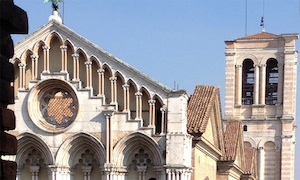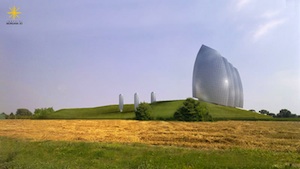Geothermal and waste energy sources
Ferrara, City of the Renaissance, and its Po Delta, with an area of 46,712 tem, was inscribed on the World Heritage List in 1995. Photo Gallery 1492 onwards by Biagio Rossetti according to the new principles of perspective. The completion of this project marked the birth of modern town planning and influenced its subsequent development. Today Ferrara continues in this creative spirit in such fields as energy.
Ferrara is one of the most sustainable cities of Italy and environmental issues are seriously taken into account by the Municipality. It subscribed the Aalborg chart in 1996 e em 1998 começou a Agenda Local 21 processo. It has also been awarded by Legambiente (órgão ambiental italiano) como melhor cidade amiga do ambiente em 2001. The municipality is member of several Italian and European networks of sustainable cities (ICLEI, BigNet, Photo Gallery) and is signatory of EU’s Covenant of Mayors.
The Geothermal Project
The use of geothermal energy as energy source starts with its discovery in 1956, during explorations for oil reservoirs at a depth of 1,000 m, 4 NW km do centro da cidade de Ferrara. At that time the well was abandoned and only after the energy crisis of the 70’s it was taken again into account, to utilize this important energy source.
Recent geo-structural and geothermal investigations carried out by HERA Group (Energy Resources Environment Holdings) in collaboration with the University of Ferrara and the Emilia-Romagna Region, confirm the presence of geothermal reservoirs in the east part of Ferrara. Three hydrothermal systems have been identified. Photo Gallery.
At the beginning of the 80’s, the Municipality of Ferrara developed a Geothermal Project in order to exploit this resource as a primary source for an urban heating system and to reduce, in a solid way, the environmental impact created by the traditional energy sources (coke, oil and methane gas, etc…).
A princípio, o fluido geotérmico (água quente, ca 100°C) é bombeado do fundo da 1,000 m da superfície; em seguida, a água quente transfere energia térmica para o sistema de aquecimento. Finalmente, , é re-introduzida no subsolo, a fim de garantir a estabilidade geotécnica.
As obras começaram em 1987 e em 1990 os primeiros edifícios foram conectados à rede de aquecimento urbano. Em 1993 a central de cogeração para a termo-destruição de resíduos sólidos foi construído, enquanto um segundo poço foi aberto em 1995. Em 1999 um alternador turbo alimentado com o vapor gerada pela usina CHP foi instalado. At the end of 2010 the installed geothermal power was about 23 MWt.
Sistema integrado de energia
Agora, a rede em Ferrara é alimentado com o chamado "Sistema de Energia Integrada", because the energy from the Waste Treatment Plant was added to the geothermal source. Este sistema tem mais benefícios ambientais e econômicos do que um tradicional, pois permite ter uma economia significativa e reduzir emissões de CO2.
The system incorporates geothermal sources, CHP (combined heat and power) units installed in the solid waste processing plants, together with boilers running on biogas and used as backup systems. Photo Gallery 22,000 housing units, mostly in private and public buildings.
But the future is more promising. The proposed new Renewable Energy Hub will allow increasing this figure to 37,000 housing units, meaning that the district heating would cover the 40% of households. Another new development is that solar thermal will be incorporated to geothermal, with the capacity to convert solar energy into thermal energy for heating with a power of 1 MWt.
The energy mix will reach 90% of renewables. With the new Hub, 56.4% of the energy in the grid will come from geothermal sources, 34.3% from the Cassana incinerator, exploiting energy from waste and agricultural biomass, 0.3% from solar thermal, and only 9% from natural gas, the only non-renewable source.
Canada
The District Heating System of Ferrara represents one of the most important examples of ‘Integrated Energy System’ that will be further increased by the future development. Devido à sua elevada eficiência de energia deste sistema é pensado para ser altamente aconselhável e transferíveis embora algum problema pode estar relacionado com o tamanho de construção necessários, relacionadas com o mercado, e razões económicas e técnicas.


















